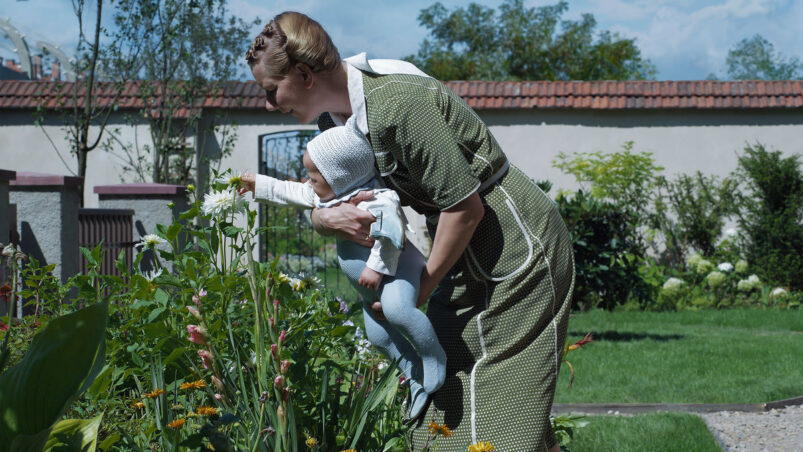It’s impossible not to think of Michael Haneke’s comments about the irresponsibility of making entertainment of the Holocaust when watching Jonathan Glazer’s The Zone of Interest. The new film from the celebrated but sadly not very prolific Glazer focuses on the mundanity of an SS officer’s home life. Unlike the book of the same name by Martin Amis on which it’s loosely based, the film uses the real names of Auschwitz commandant Rudolf (Christian Friedel) and his wife Hedwig Höss (Sandra Hüller) to drive home the reality of the slice of life presented here. These were real people, who lived real, horrifyingly normal lives.
As a slice of life film, The Zone of Interest is more portrait than narrative and spends nearly the entire first half simply observing the life of the Höss family. They go swimming in a nearby river, walk through the beautiful forest right outside their door, and take their time turning off lights before bed. An early sequence sees Hedwig lovingly care for the family’s infant child after Rudolf goes to work at the camp.
A camp that is literally just on the other side of a wall. A gray stone wall topped with barbed wire and set in dirt that’s also home to a variety of beautiful flowers on the side we see. That wall makes a scene of Hedwig showing her mother the garden deeply disturbing. Hedwig beams with pride as she shows off the flowers, the pool, and the gazebo, while her mother Linna (Imogen Kogge) praises the “paradise” her daughter has made for her family.
What makes the conversation all the more troubling is that the mother and daughter acknowledge the wall. Linna asks if the camp is just on the other side and Hedwig confirms that it is. They then briefly talk about an old Jewish neighbor who may or may not be on the other side before happily continuing their conversation about how great Hedwig’s life is with her husband overseeing the camp.
The film approaches a narrative when that life is threatened, not by anything particularly dramatic, but by Rudolf being reassigned due to structural changes. The most dramatic scenes in the film have nothing to do with the thousands of murders being committed a few feet away from the Höss’s domestic bliss, and are instead spurred by the likely relatable issue of a work requirement complicating home life.
Glazer and cinematographer Lukasz Zal add to the feeling that we’re looking at a regular family’s day to day by shooting the film with a crisp, digital look that keeps everything in focus. Zal has said that they wanted to present the events of the film as “objective”, attempting to remove any sense of stylization and allowing the audience to make choices about what to look at in the frame.
That framing frequently allows just enough space above the actors in garden scenes to see the barbed wire atop the wall, or the smoke rising from a train shuttling Jews to the camp. The attempt at a visual “objectivity” also unnerves with its sense of reality as several scenes, particularly interiors, have the look of home videos from early digital camcorders.
The Zone of Interest is almost boring, but that’s exactly why it’s so disturbing and powerful. It highlights not just the matter of fact calmness of those who actively participate in genocide, but also the desire for a sense of normalcy that enables people to go about their daily lives as others are slaughtered mere feet from their door. That the film does so without ever directly calling attention to this only makes it more remarkable.
READ NEXT: Make the Case: 7 Best David Warner Movies
Some of the coverage you find on Cultured Vultures contains affiliate links, which provide us with small commissions based on purchases made from visiting our site.


